What A Way To Go: 25 Final Films From No-Longer-Living Legends
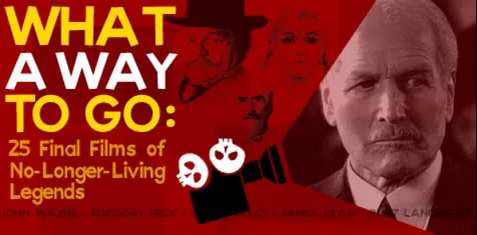
Everybody dies, even famous actors. Some have the common sense to phase out their careers while they’re still at the top of their game and enjoy the fruits of their retirement, others milk their fame for all its worth and work ’til they drop, which is often well past their sell-by date, and, of course, there are those who die far earlier than anyone anticipated, least of all themselves, leaving their most recent project – whatever it may have been – as their last project. Bullz-Eye took a look at the filmographies of some of Hollywood’s greatest actors and examined their swan songs, and, indeed, all three of the aforementioned categories are represented.
There were only two caveats used when citing these final films: they had to have been live-action works (i.e. no voiceover performances), and the actors had to have been playing someone other than themselves. You will no doubt find yourself asking, “Hey, why didn’t [INSERT FAVORITE ACTOR’S NAME HERE] make this cut?” If you’ve got a favorite final film by an actor that was left out of the mix…hey, that’s what the Comments section is for. For now, though, sit back and enjoy…
1. Humphrey Bogart, “The Harder They Fall” (1956): Although many tend to think of his definitive work as having taken place in the 1940s simply by virtue of the fact that it’s when both “Casablanca” and “The Maltese Falcon” were released, Humphrey Bogart continued to offer exemplary performances throughout the ‘50s, receiving his Oscar for “The African Queen” (1951), a nomination for “The Caine Mutiny” (1954). By the mid-1950s, however, the actor’s health was failing, and he would soon be diagnosed with cancer of the esophagus…not that you’d know it from his work load: in 1955, he starred in “We’re No Angels,” “The Left Hand of God,” and “The Desperate Hours.”
Watching Bogie in his final film, “The Harder They Fall,” it’s easy to say that he looks tired and worn out, but it’s just as easy to attribute that to the character he’s playing. Eddie Willis (Bogart) is a former sports writer who’s struggling to make ends meet after his newspaper shuts down, and when he’s hired by Nick Benko (Rod Steiger), a boxing promoter known for his somewhat imprecise morality, to help promote his new fighter, a naïve Argentinean named Toro Moreno (Mike Lane), there’s little question that Eddie’s doing it for the money. Everybody knows that wrestling is fake, but you may be surprised to see the behind-the-scenes shenanigans that go on in boxing: Toro’s a pretty rotten boxer, but Eddie promotes the hell out of him while Nick and his cohorts fix the fights, enabling Toro to steadily work his way up the ranks. The ending is pretty heavy-handed, with the music soaring as Eddie sits down in front of his typewriter to hash out the boxing expose that will help to clear his conscience, but Bogart is fantastic throughout the film. Sadly, it’s out of print on DVD, but if you’ve never seen it before, you may find it worth the $14.99 it’ll cost you to download it from iTunes. Eight months after “The Harder They Fall” hit theaters, Bogart lost his own fight, falling victim to his cancer at the age of 57. – Will Harris
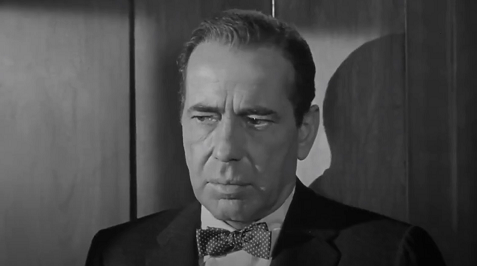
2. James Dean, “Giant” (1956): George Stevens’ massive adaptation of Edna Ferber’s sprawling novel about ranchers and oil millionaires in the first half of the 20th century remains an especially poignant farewell, indicating the versatile actor 24 year-old James Dean would have become had he not died in an auto wreck shortly before production was completed.
At first, Dean’s Jet Rink is in line with his other roles, a rebellious, troubled ranch hand who shyly flirts with beautiful Leslie Benedict (Elizabeth Taylor) and generally runs afoul of her cattleman husband, Bick Benedict, Jr. (Rock Hudson). As a couple of decades progress, however, Rink strikes it rich — richer than the Benedicts. Wearing a mustache and with his head partially shaved to suggest a receding hairline, Rink becomes a villain of sorts as he falls for the Benedicts’ beautiful college-age daughter (Carroll Baker) and his resentments against the clan congeal into alcoholic sentimentality, jealousy, and virulent racism. Not that he’s all bad or all sad. Speaking in a mumbly Texan patois reminiscent of Boomhauer from “King of the Hill,” Dean’s Rink is highly vulnerable but full of the impish humor Dean only hinted at in “Rebel Without a Cause.” Even if the part seems artificial compared to Dean’s other roles and even if director Stevens felt it was necessary to have a key speech posthumously looped by Dean’s friend, Nick Adams, “Giant” reminds us that Dean was a lot more than a pop-culture icon or a pretty-boy emoting-machine, he was an actor. – Bob Westal

3. Grace Kelly, “High Society” (1956): Like James Dean, Grace Kelly only had to make a few films to become an immortal. Fortunately, her career wasn’t ended by death but by her “fairy tale” marriage to Prince Rainier of Monaco — although she would eventually die as the result of a car accident a quarter century later.
A musical remake of the romantic comedy classic “The Philadelphia Story” with new songs by Cole Porter and co-starring Bing Crosby and Frank Sinatra, “High Society” was a box office success and, in theory, a perfect filmic swansong. The part of romantically confused heiress Tracey Lord fit Grace Kelly very nicely, and she had actually performed the part as her graduation performance from the prestigious American Academy of Dramatic Arts. Nevertheless, she was stepping into enormous shoes — the part was written for and remains forever associated with Katherine Hepburn — but Kelly, still only 26 years old, seems to effortlessly make the part her own, adding an element of wholesome sensuality that Hepburn couldn’t quite match. She even sang nicely in a duet with Crosby of Porter’s “True Love.” For all of that, the musical comedy got mixed reviews. Director Charles Walters was not one of the greats of cinema and Sinatra and Crosby arguably had better chemistry with each other than they did with their absurdly beautiful lead. Maybe the fact that “High Society” was just okay made it easier for Kelly to attend to her royal duties and charity work and leave acting behind forever. – BW
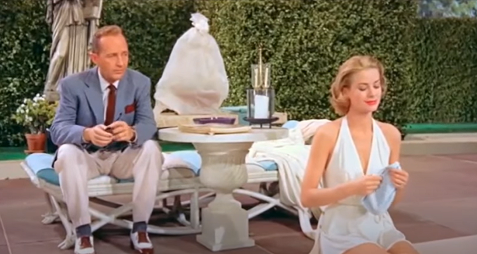
4. Clark Gable / Marilyn Monroe, “The Misfits” (1961): This intense modern-day western drama was billed as “the ultimate motion picture” and achieved something of the status of myth, and not only because it proved to be final film for both the jovially super-masculine “king of Hollywood” and its ultimate sex symbol. Written by the revered playwright Arthur Miller (“Death of a Salesman”) and directed by an occasionally drunk John Huston — better high than ordinary directors stone cold sober — so much drama occurred on the set that Clark Gable’s ultimately deadly heart attack just a couple of days after shooting seems almost inevitable.
Moreover, a heavy smoker and ex-drinker in his late fifties, Gable insisted on doing some extremely arduous and dangerous stunts in the heat of the film’s Nevada locations. Though the emotionally troubled Monroe died of a probable drug overdose under still-controversial circumstances the next year, she was believed to be near death at one point and hospitalized for ten days during filming, almost certainly because of substance abuse. The film might have had a third death of a true acting great. Co-star Montgomery Clift had so many of his serious troubles that Monroe said, “He’s the only person I know that is in worse shape than I am.” The miracle is that, amidst all this chaos, Monroe and Gable did perhaps the best work of their respective and awe-inspiring careers. Vulnerable, highly emotional, utterly natural, both of them movie stars to the very end. – BW
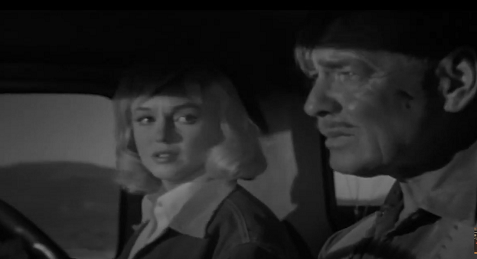
5. Vivien Leigh, “Ship of Fools” (1965): Some call it “Grand Hotel” on the high seas, but I like to think of “Ship of Fools” as being the heaviest “Love Boat” episode ever made. Either way, though, if there’s one thing you can say about director Stanley Kramer…and, actually, there are lots, but for these purposes, let’s just go with the one…it’s that he was a man who really knew his way around an ensemble cast.
By this, I mean to say that, although “Ship of Fools” was Vivien Leigh’s final film and finds her name sitting at the toppermost of the credits, it wasn’t just her film. Indeed, if “Ship of Fools” was a wrestling match, most critics would argue that Oskar Werner and Simone Signoret are the ones who walk away with the championship belt. Still, Leigh turned in a performance which, not unlike her roles in “Gone with the Wind” and “A Streetcar Named Desire,” bore certain similarities to her own life: as Mary Treadwell, Leigh is forced to confront the effects of age and, by the end of the film, comes to the horrifying revelation that she’s not as young as she used to be. (That doesn’t stop her, however, from turning in a brief but formidable performance of the Charleston.) After “Ship of Fools,” Leigh continued to work in the theater, but she had been battling tuberculosis since the 1940s and, alas, succumbed to the effects of the disease in 1967. – WH
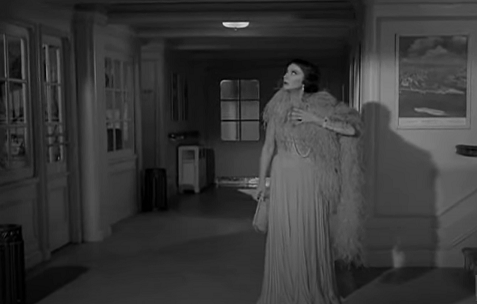
6. Cary Grant, “Walk Don’t Run” (1966): The epitome of Hollywood class, it’s little wonder that Cary Grant made the decision to bow out of acting while still more or less at the top of his game, and he made the transition perfectly with “Walk Don’t Run.” Grant plays Sir William Rutland, a British businessman who takes a trip to Tokyo on matters of industry, but his decision to arrive a few days early backfires, as the city is in the throes of Olympic fever, leaving no rooms available. Although the British embassy proves of no assistance, while in their offices, Sir William spies an advertisement for a room to rent by Christine Easton (Samantha Eggar). Though at first hesitant to accept a male border, Easton finally concedes to his charms and allows him to stay.
What’s interesting, though, is that after years of playing the suave romantic interest, Grant yields that position in the film to Jim Hutton, who plays Steve Davis, an Olympian athlete who’s also without lodging. Davis convinces Sir William to sublet half of his room, meets his new roommate, and…well, despite the fact that Miss Easton is engaged, you can still probably imagine what happens from there. Grant enjoyed 20 years of life after leaving Hollywood, entering the world of business and serving on the boards of Faberge and other companies, but if anyone ever tried to tempt him to step back in front of the camera, they were unsuccessful. Fair enough: when you’ve gone out on top, why risk ruining that? – WH

7. Charlie Chaplin, “A Countess from Hong Kong” (1967): Marlon Brando, Sophia Loren, and Tippi Hedren starred in this one-two punch for Chaplin’s career, which offered his final work as both actor and director. Brando plays the newly-appointed ambassador to Saudi Arabia who, while sailing back to America from Hong Kong, finds that a Russian countess (Loren) has stowed away in his cabin in an attempt to escape a life of prostitution. In his autobiography, Songs My Mother Taught Me, Brando had little positive to say about the experience of working on the film, describing it as “a disaster,” and though he calls Chaplin “perhaps the greatest genius that the medium has ever produced,” it’s after referring to him as “a fearsomely cruel man,” “an egotistical tyrant,” and “probably the most sadistic man I’d ever met.” Yikes. Chaplin, however, was quite proud of the film, though the time he spends on the screen is but a few seconds: he makes a brief cameo as an old steward who asks the ambassador to make sure that the portholes in his room are closed. Although Chaplin had planned to make at least one more film (“The Freak,” which he had written for his daughter, Victoria), it never came to pass. He did receive an honorary Oscar in 1972, an event which led to the longest standing ovation (it lasted for 12 minutes) in Academy Awards history, but with his health on the decline, Chaplin died on Christmas Day 1977 at the age of 88 with “Countess” as his last on-camera effort. – WH

8. Spencer Tracy, “Guess Who’s Coming To Dinner” (1967): Watching Stanley Kramer’s lighthearted drama today, you might never know that Spencer Tracy was grievously ill during filming. You might notice, however, that he looks much older than 67 and that his co-star and love of his life, Kathryn Hepburn, spends most of the running time near tears. Still, Tracey’s performance is typically direct, entirely on-point and extremely poignant. The actor known for his dislike of “embroidery” keeps it simple, focusing on his character’s befuddlement as an anti-racist newspaper publisher forced to a decision about the marriage of his daughter (Kathryn Houghton) to an Ivy-league educated doctor and philanthropist who happens to be black (Sidney Poitier). The father’s “dilemma” is thankfully dated, but Tracy and Hepburn still share the same unmatched comic-romantic chemistry that made them the most beloved couple in film history.
Moreover, the fabled Tracy gift for simplicity turns a lengthy monologue delivering his verdict, which should have been a terribly clunky ending, into a solid climax and a fitting end to a great career. The speech , about the impossibility of suppressing true love, was personally relevant to both stars (a Catholic, Tracy remained married to his first wife throughout his officially secret relationship with Hepburn), and it must have been very tough for the two long-time lovers to get through the scene without breaking down completely. Nevertheless, Tracey made it to the end of shooting despite the fears of the film’s insurers, and was thrilled to have done so. He died twelve days later. – BW
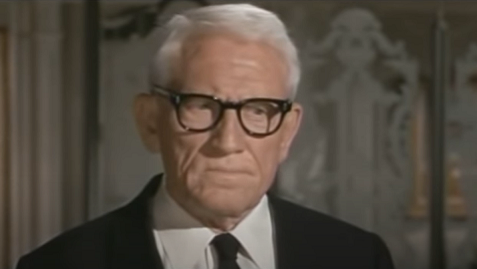
9. Groucho Marx, “Skidoo” (1969): When he first makes the scene in “Skidoo,” the hair and moustache look suspiciously as if they’ve been dyed black for the occasion, but upon seeing that familiar grin surrounding a cigar as he tries to show a bumper pool table who’s boss, you realize that you’ll forgive Groucho Marx just about anything…which is convenient for him, given this movie.
It is impossible to read the cast list without wondering how it could possibly have gone so wrong: Jackie Gleason, Carol Channing, Frankie Avalon, Mickey Rooney, Burgess Meredith, Cesar Romeo, Frank Gorshin, Peter Lawford, Slim Pickens, George Raft, Arnold Stang, and Richard Kiel all appear in the film. Harry Nilsson even did the soundtrack, for God’s sake! Place the blame on director Otto Preminger and screenwriter Doran William Cannon, who set out to satirize the modern world and ended up making one of the strangest artifacts of the late 1960s, one which is a must-see only because trying to describe it takes far more time and space than we have available to us here. In “Skidoo,” Groucho plays a gangster named God, who lives on a boat in international waters to avoid extradition. Paul Krassner has said that Groucho dropped acid with him in an attempt to get better attuned to the LSD aspects of the film (at one point, Gleason trips out and sees Groucho’s head spinning atop a giant screw), and the movie ends with Mr. Marx taking a hit from a joint, so the experience was definitely an education for him, if nothing else. The early ’70s found Groucho experiencing a career resurgence, thanks to his one-man show, “An Evening with Groucho,” and he made several talk show and variety show appearances, but aside from a blink-and-you’ll-miss-it uncredited cameo as himself in 1972’s “The Candidate,” he never appeared in another film after playing God. Not the best way to go out, but like we said, we can forgive Groucho almost anything…and, yes, that includes “Skidoo.” – WH
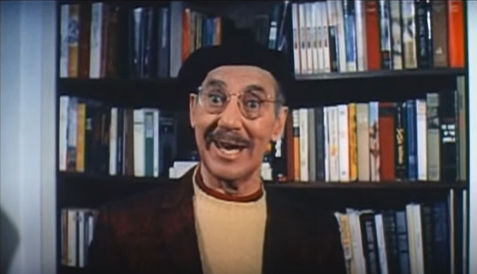
10. Joan Crawford, “Trog” (1970): Pushing sixty-five and addicted to 100 proof vodka, the former queen of Hollywood and present Pepsi-Cola executive was now a lot better known in the late sixties for such grand guignol hits as “Whatever Happened to Baby Jane?” and “Straitjacket” than she was for dramatic roles like “Mildred Pierce.” So, she found herself headlining the latest from hack producer Herman Cohen (“I Was a Teenage Werewolf” and “I Was a Teenage Frankenstein”). The script, which features Crawford as a scientist protecting a sweet but occasionally homicidal troglodyte (actor Joe Cornelius in half an ape costume) from a rampaging reactionary (Michael Gough), is the kind of sub-sub-par sci-fi where the writers seem unclear on the difference between an anthropologist and an M.D. and where everyone on screen — including intrepid police detective Thorley Walters — mysteriously forgets the brutal killing that opens the film.
Though “Trog” had a competent director in legendary cameraman Freddie Francis, it was unsalvageable in just about every way and Crawford’s performance frankly wasn’t a big help. While the low-budget effort turned a profit despite being terrible, Crawford avoided acting afterward and was forced by her Pepsi fellow executives into an early retirement in 1973. Soon, Crawford became self-conscious about her appearance and went into hiding, although she did give up drinking. Dying from a 1977 heart attack, Crawford lost her final battle to control her image with the 1978 release of a damning tell-all book by her disinherited daughter, Christina Crawford, “Mommy Dearest.” – BW
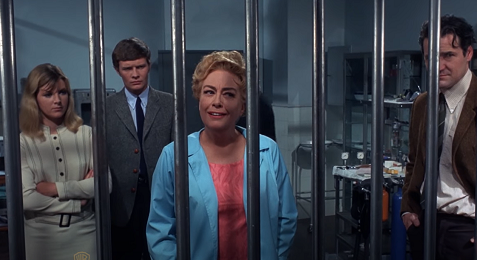
11. Edward G. Robinson, “Soylent Green” (1973): In 1931, a short, puggish and highly intelligent Jewish-Romanian immigrant became a movie icon playing the most unglamorous of the great movie gangsters, “Little Caesar.” By 1973, the “actor’s actor” had appeared in 100 films, delivered innumerable great performances and become one of the most recognized and impersonated movie voices of all time. (Chief Wiggum of “The Simpsons” is actually Robinson, see.) He was also 79 and seriously ill, but still looking for his 101st part. He lobbied for “The Godfather,” but instead co-starred with Charlton Heston in an involving but overripe ultra-dystopian science-fiction film whose spoilerific last line has become a slightly gruesome running pop-culture joke. (Fill in the blank: “Soylent Green is _______!”)
Robinson plays Sol Roth, detective Heston’s best friend, researcher, and hovel-mate, who remembers how things were before massive over-population all but rid the world of plants, animals, and two-bedroom apartments. Uncovering a massive conspiracy he cannot stomach, Roth/Robinson decides to end things and escape a gray and joyless Earth by participating in a government-sponsored euthanasia program in which he dies in a spa-like setting while watching large-format nature footage with stereophonic sound. Robinson apparently decided to ensure that his last scene was as memorable as possible by waiting until just before the scene was filmed to tell his co-star that he had terminal cancer. Heston cried real tears and so do most viewers. Robinson died twelve days after filming. He got an honorary Oscar, his first, the following March. – BW

12. John Wayne, “The Shootist” (1976): Given that “The Shootist” was about a gunfighter who’s dying of cancer, it’s easy to see why many people believe that John Wayne was actually dying of cancer while he was making the film.
In fact, the Duke’s battle with the big C originally took place in 1964, but after the removal of four ribs and his left lung, he was pronounced free of the disease, a diagnosis which was still in place in 1976. The fact that Wayne did eventually succumb to stomach cancer a few years later, however, certainly gives the film an added degree of poignancy. Directed by Don Siegel, “The Shootist” brings together a remarkable cast filled with some of Wayne’s fellow Hollywood legends (Jimmy Stewart and Lauren Bacall), a few other lifelong cowboys (Richard Boone, Hugh O’Brien), and several other instantly familiar faces, including Ron Howard, Harry Morgan, John Carradine, and Scatman Crothers.
Although it wasn’t a huge success at the box office – action stars doing character studies rarely equal big bucks – the critics loved the film, and over the years, “The Shootist” has come to be appreciated as the perfect farewell to the man who remains the most famous cowboy in movie history. – WH
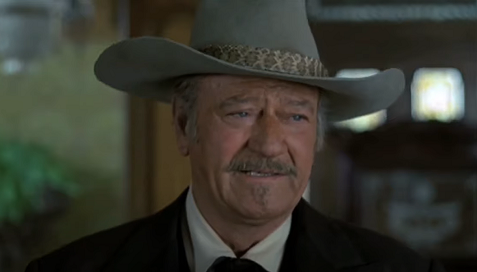
13. Ingrid Bergman, “Autumn Sonata” (1978): “Bergman and Bergman: Together Again for the First Time!” The idea of teaming Swedish director Ingmar Bergman with Swedish actress Ingrid Bergman would seem to be a match made in marketing heaven, save for the fact that the former was never what you’d call overtly commercial. The two had crossed paths before, with Ingmar promising to work with Ingrid; in the early 1970s, they met again at the Cannes Film Festival, where she reminded him of his promise. “Autumn Sonata” soon followed. The two didn’t exactly bond while working together, in no small part because Ingmar was used to working with members of his regular repertory of players, but they nonetheless produced a powerful film about the tense relationship between Charlotte (Bergman), a famous concert pianist whose career turned her into an absentee mother, and her eldest daughter, Eva (Liv Ullmann), whose efforts were never good enough for Mama.
You can only imagine, then, how well Mama dealt with Eva’s handicapped sister, Helena. Those who were hoping that, after Eva poured her heart and soul out, Charlotte might see the light and become a better mother must’ve been horrified when, in the final minutes of the film, she wonders aloud of Helena, “Why can’t she die?” Ironically, Ingrid Bergman herself knew of her own terminal cancer at the time she spoke these words. The actress died in 1982, but not before offering an Emmy Award-winning performance as the late Israeli Prime Minister Golda Meir in “A Woman Named Golda.” – WH

14. Steve McQueen, “The Hunter” (1980): They called him “The King of Cool,” and all you have to do is look at a list of his films to know that it’s a nickname Steve McQueen deserved. Even setting aside the fact that he was the star of “The Blob,” which is pretty tremendous in and of itself, the guy was in “The Magnificent Seven,” “The Great Escape,” “Bullitt,” “The Getaway,” “The Thomas Crown Affair,” and “The Towering Inferno,” and that’s not even close to all of the awesomeness in his back catalog. In “The Hunter,” McQueen plays Ralph “Papa” Thorson, a bounty hunter who’s starting to feel his age, not least of all because his girlfriend (played by Kathryn Harrold) is pregnant; as he travels the country, chasing criminals and bail jumpers, he’s also being chased by a psycho who he apprehended once upon a time.
At the time “The Hunter” was released, it wasn’t exactly revered as an instant classic, but it plays a heck of a lot better nowadays. Indeed, it actually feels a little ahead of its time: not only is it probably the first time an action hero attended a Lamaze class, but – and please correct us if we’re wrong – McQueen may well be the very first person ever to utter the line, “I’m getting too old for this shit.” While filming “The Hunter,” McQueen discovered that he was suffering from mesothelioma, but his actual death was the result of cardiac arrest following a failed attempt to remove several abdominal tumors. McQueen’s legacy, however, still lives on: the director known as McG is currently in production on “Yucatan,” a film based on unfinished storyboards and notes developed by the actor before his death. It’s described as an “epic adventure heist.” But, then, what else would you expect from Steve McQueen? – WH

15. Jimmy Stewart, “Afurika Monogatari” (1980): For those who may be wondering, it was Mr. Stewart who was directly responsible for inspiring the “no animated films” rule for this piece. With all due respect to those who may have enjoyed “An American Tail: Fievel Goes West,” we simply couldn’t see fit to leave Hollywood’s finest everyman with Sheriff Wylie Burp as his final credit.
As a result, we ended up with one of the more interesting stories to be found within this feature…if it’s true, that is. According to the film’s trivia section on IMDb, Stewart said in an interview that he and his wife were vacationing at a game preserve in Kenya when they came across the filmmakers shooting “Afurika Monogtari” (also known as “Africa Story” or “The Green Horizon”), and that he was persuaded to make a short appearance and speak a few lines because he thought it would help to promote wildlife conservation. Stewart’s character, a grizzled recluse, is simply credited as “Old Man,” and we must be honest and admit that we’ve never seen the film, but this review on MidnightEye.com doesn’t exactly leave us chomping at the bit to remedy that: “The incongruous sight of James Stewart conversing with a Maasai tribesman in fluent Japanese does lend the film a certain curiosity value, though it still can’t disguise the fact, that in any language, ‘Africa Story’ is quite awful.” Ouch.
Between this pan and the one review at IMDb of the film, which opens with the words, “This is the most boring movie ever made,” we’d almost tell you to stick with “Fievel Goes West,” but as an alternate late-career performance by Stewart, consider the ahead-of-its-time 1983 HBO film “Right of Way,” where he and co-star Bette Davis tackle the controversial subject of euthanasia. When Stewart died in 1997, President Bill Clinton said, “America lost a national treasure today.” Few, if any, disagreed with the assessment. – WH
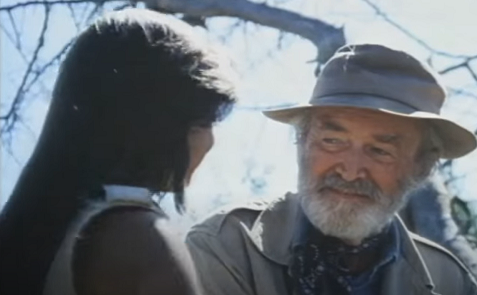
16. James Cagney, “Ragtime” (1981): – After working with director Billy Wilder in 1961’s “One, Two, Three,” James Cagney decided that he was through with acting, instead preferring to spend his remaining days painting. It was a good plan for as long as it lasted, and he stuck to his guns for two decades, even passing on Francis Ford Coppola’s request that he play Hyman Roth in “The Godfather Part II,” but as Cagney’s eyesight worsened, painting became less enjoyable for him and his spirits began to sink. As such, when the idea of returning to acting was pitched to him in the early 1980s, he responded in typical Cagney fashion, first saying, “No, I’m retired,” then, two seconds later, asking, “What kind of part?” As it happened, Cagney was already familiar with the novel “Ragtime,” about an African-American piano player who takes the law into his own hands after being denied justice because of his race, and it was more than a little bit appropriate for Cagney to play an authority figure like Police Commissioner Rhinelander Waldo, given that everyone who worked with him on the film looked up to him. In addition, “Ragtime” served as a reunion between Cagney and his old friend Pat O’Brien, for whom the film also proved to be a cinematic swan song. – WH
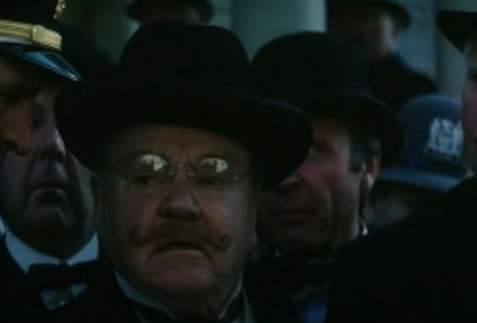
17. Henry Fonda, “On Golden Pond” (1981): Of all the actors on this list, it would be easy to argue that Henry Fonda was the most successful at switching back and forth between motion pictures and television. He was by no means the only one who took a shot at it – few today remember that Jimmy Stewart took a couple of unsuccessful stabs at TV series in the early 1970s – but Fonda just seemed to pick better, earning an Emmy nod for the TV movie “The Red Pony,” starring in the death-row drama “Gideon’s Trumpet,” and appearing in miniseries like “Captains and Kings” and “Roots: The Next Generations.” The same quality control didn’t seem to apply to his film work at the time, which included “Rollercoaster,” “Tentacles,” and “The Swarm,” but in 1981, he came back strong with his most memorable motion picture role in decades.
The opportunity to play the irritable Norman Thayer alongside Katharine Hepburn – who, surprisingly enough, he had never met before – came to Fonda through his daughter, Jane, who purchased the rights to the play “On Golden Pond.” Was it because the relationship of their characters in the film, who are also father and daughter, so closely mirrored their own? Almost certainly. Fonda is absolutely hysterical as the imminently quotable Norman (“Wanna dance? Or would you rather just suck face?”), but his performance turns poignant as Norman realizes that his increasing senility is making him a danger to himself as well as others. Although Fonda survived to win the 1981 Best Actor Oscar for his work on “On Golden Pond,” he was too ill to attend the ceremony (Jane accepted on his behalf), dying from heart disease in August 1982. – WH

18. Bette Davis, “Wicked Stepmother” (1989): First, a casual observation: if you’ve never read “Fasten Your Seat Belts: The Passionate Life of Bette Davis,” by Lawrence J. Quirk, you’re missing out on a treasure trove of amazing old-Hollywood stories and some incredibly bitchy quotes…like about this film, for instance.
Bette Davis spent the later years of her career making some incredibly bad movies, invariably waving them off as something she’d done strictly for the paycheck, so she really has no one to blame but herself for the fact that her final film falls into this very category. Davis shot on the film for a week, left in order to have dental surgery, hesitated to come back because the surgery had resulted in significant weight loss, then quit altogether because she felt that director Larry Cohen’s focus was on the special effects rather than on her. Plus, according to Quirk’s book, she didn’t like the way Cohen was shooting her, anyway. “People will be horrified at the footage on me,” she said in an interview. “For the good of my future in films, I had no choice but to withdraw. I’m not a vain person, but at 80 years old, I don’t want to look the way I looked. It seriously could be the end of anybody ever hiring me again!” Ahem. If you’re wondering how the film still ended up coming out, it’s because Cohen rewrote the script in order to utilize the footage that he had, switching things up so that Davis’s character, a wicked witch, transforms herself to look like another actress. Davis never saw the finished film – she died in October 1989, while “Wicked Stepmother,” which bypassed theaters, was released on video cassette the following month – but even her acid tongue likely couldn’t have beaten his last word: “Many people give Bette Davis dinners and awards, but very few give her jobs. I gave her a job!” And, oh, what a job it was… – WH
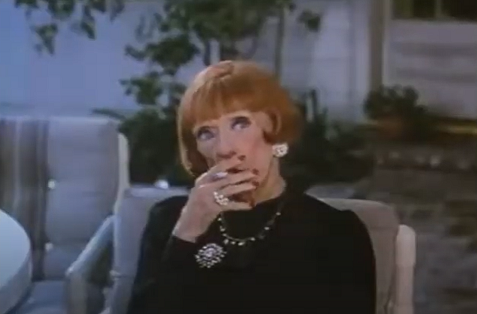
19. Audrey Hepburn, “Always” (1989): Looking over the stunning Ms. Hepburn’s career, one sees several significant gaps in the later years. The first came after 1967’s “Wait Until Dark,” when she stepped away to enjoy life as a wife and mother, but she returned to the screen in 1976 to co-star with Sean Connery as the title characters in “Robin and Marian,” then came back again for “Bloodline” in 1979 and “They All Laughed” in 1981. After that, though, there was an eight-year gap during which much of her time was spent on humanitarian activities with UNICEF. Finally, in 1989, Hepburn reappeared…and, oh, how apropos that her final film role should find her playing an angel.
One can only guess at what led Steven Spielberg to remake the 1943 film “A Guy Named Joe,” about a pilot named Pete who dies, returns to help mentor a new pilot, and is horrified when the new pilot falls in love with Pete’s former girlfriend. The first time around, the dead pilot was played by Spencer Tracy. This time, it’s Richard Dreyfuss, and when he dies, he’s given his indoctrination lecture by an angel named Hap, who promotes him to Guardian Angel and sends him on his merry way. Hepburn doesn’t have much to do beyond this sequence, but even as a senior citizen, she remains a vision of loveliness. What a shame, then, that the film is generally considered one of Spielberg’s weaker efforts. After “Always,” Hepburn returned to her humanitarian work and never looked back, but in the final months before her death in 1992, she hosted a TV series (“Gardens of the World with Audrey Hepburn”) and recorded an album of children’s stories which would go on to win her a posthumous Grammy Award for Best Spoken Word Album for Children. – WH

20. Burt Lancaster, “Field of Dreams” (1989): We could just as easily be discussing Burt Lancaster’s Academy Award–nominated performance in Louis Malle’s “Atlantic City” (1980) as his final work, as the actor nearly died during what was supposed to be a routine gall bladder procedure shortly after filming was completed. Thankfully, Lancaster survived – though not without suffering his share of health scares in the years to come – and in a fitting moment of irony, Lancaster graced the silver screen for the last time as…a doctor.
Lancaster is only on screen for ten minutes or so of “Field of Dreams” – which is not just one of the greatest baseball movies of all time but one of the greatest fantasy movies as well – but he steals the movie as Archibald “Moonlight” Graham, a ball player from the ‘20s who only played in one game and ultimately hung up his cleats to practice medicine. In the end, Graham teaches Costner’s character Ray the most important lesson of all about dreams: they’re just dreams, and most people do their best work in life after they’ve let them go. That this lesson in humility should come from someone as profoundly gifted as Lancaster is also not without its irony, we suppose. – David Medsker
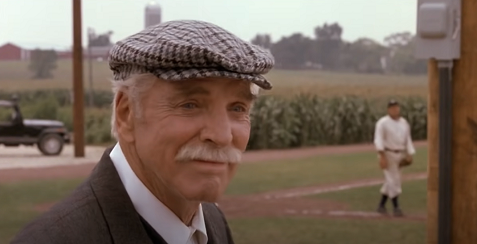
21. Laurence Olivier, “War Requiem” (1989): – As arguably the greatest actor of his generation, it’s no surprise that Laurence Olivier’s filmography found him unafraid to mix up the types of roles that he accepted. In his later years, he played a Greek god (“Clash of the Titans”), a couple of Nazis (“Marathon Man,” “Wild Geese II”) and a Nazi hunter (“The Boys from Brazil”), nemeses to both Dracula and Sherlock Holmes, and even Neil Diamond’s dad (“The Jazz Singer”). Olivier’s final role, however, found him confined to a wheelchair and didn’t even involve any onscreen dialogue…though, in fairness, no one else got any, either. “War Requiem” was originally a piece of music composed by Benjamin Britten, and director Derek Jarman built a silent film around it, the events of which are ostensibly the memories of Olivier’s character, identified simply as Old Soldier.
But as Olivier is wheeled through the opening moments of the film (pushed by his nurse, played by Tilda Swinton), we do get to hear him in voiceover, reciting Wilfred Owen’s poem, “Strange Meeting.” Although he would be dead six months after the release of “War Requiem,” we would be remiss if we didn’t mention that Olivier actually managed to appear in a film after his death. In “Sky Captain and the World of Tomorrow,” director Kerry Conran utilized BBC footage of Olivier giving an interview and, with the aid of special effects, turned the late thespian into the mad Dr. Totenkopf. Very cool, yes, but we’ll still stick to his formal farewell, thanks. – WH
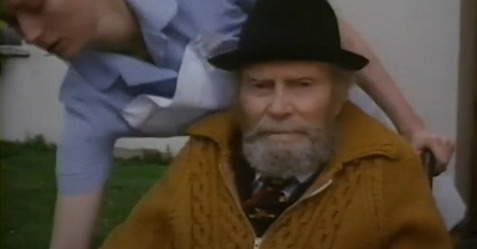
22. Gregory Peck, “Cape Fear” (1991): Many an actor has opted to take their final onscreen bow while offering a tip of the hat to an earlier role, and the original 1962 version of “Cape Fear,” Peck played Sam Bowden, the Florida lawyer who finds himself stalked and threatened by one of his former clients, the psychotic Max Cady.
Nick Nolte tackled Peck’s role in the remake, but Scorsese took it upon himself to cast Peck and a couple of his fellow co-stars from the original (Robert Mitchum and Martin Balsam) in small roles. This time around, Peck stepped into the shoes of Lee Heller, Cady’s attorney, and although he doesn’t turn up until well over an hour into the proceedings, his presence, no matter how brief it may be, has a profound effect. It wasn’t so much the sheer kick we got out of seeing Peck onscreen again (after all, he’d just been in “Other People’s Money” with Danny DeVito) as it was the thrill of getting yet another chance to see Peck practice law. Granted, it wasn’t exactly the return of Atticus Finch, but it still gave a lot of people a warm, fuzzy feeling. Peck did a few more TV movies after “Cape Fear,” performing a similar character callback when he appeared in a miniseries adaptation of “Moby Dick,” but he spent more time doing speaking engagements than anything else. There’s a non-documented claim on his Wikipedia page that he was offered the role of Grandpa Joe in Tim Burton’s “Charlie and the Chocolate Factory” but died before he could accept. Even if it’s true, let’s pretend it isn’t. – WH

23. Katharine Hepburn, “Love Affair” (1994): Although she also appeared in two made-for-TV movies the same year (“This Can’t Be Love” and “One Christmas”), there’s no question that “Love Affair” is the most appropriate project to treat as Katharine Hepburn’s swan song. A rarity in Hepburn’s filmography, she played…gasp!…a supporting role in the film, appearing as Ginny, the elderly aunt of Mike Gambril (Warren Beatty). Mike and his new lady friend, Terry McKay (Annette Bening), stop to visit Ginny, an event which ultimately proves quite pivotal in their relationship. In an effort to woo Hepburn for the part, Beatty sent her so many floral arrangements that she eventually said to her longtime friend A. Scott Berg, “Jesus! I might have to say ‘yes’ just to stop him from sending any more flowers!”
And so she eventually did. No matter what you may think of the film as a whole, you will be hard pressed to keep from getting misty during the final moments of Hepburn’s performance. The music swells, Beatty and Bening say their farewell, and the camera pulls out on Hepburn sitting alone on the couch, waving goodbye. Though she continued to receive the occasional film offers, including one to play Aunt March in “Little Women” alongside Winona Ryder and Claire Danes, Hepburn accepted no further work, instead enjoying her retirement in Connecticut, where she lived until her death in 2003. – WH
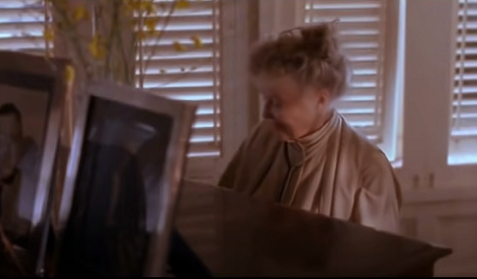
24. Marlon Brando, “The Score” (2001): After witnessing the performance given by the man formerly known as “The Wild One” in John Frankenheimer’s 1996 taken on “The Island of Dr. Moreau,” you would be forgiven for believing that Marlon Brando had abandoned the craft of acting in favor of exercising his God-given right to be an eccentric old man. While various interviews given by Brando around that time lend credence to that theory, he managed to surprise us all by pulling one last great performance out of his hat. “The Score” brings together three generations of acclaimed actors – Brando, Robert De Niro, and Edward Norton – and although Brando allegedly annoyed director Frank Oz by regularly riffing on Oz’s Muppet alter ego, calling him “Miss Piggy,” they still managed to produce a top-notch heist film.
Roger Ebert described Brando’s role, Max, as “a dialed-down Sidney Greenstreet character–large, wealthy, a little effeminate; his days of action are behind him, and now he moves other men on the chessboard of his schemes.” Of course, this worked well with the actor’s girth at the time, but unlike some of his other late-career performances, Brando wasn’t phoning this one in; relishing the opportunity to work with De Niro, the two actors reportedly improvised the majority of their scenes together. After “The Score,” the combination of Brando’s weight, health, and general lack of interest in Hollywood resulted in the actor remaining close to home, and in 2004, he died at the age of 80 of respiratory failure brought on by pulmonary fibrosis. – WH
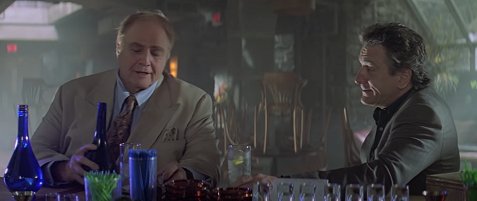
25. Paul Newman, “Road to Perdition” (2002): Through his commitment to quality, good works, and delicious Newman’s Own treats, Paul Newman at 77 was, as far as many film-goers were concerned, a saint among movie stars. Then he took the role that would turn out to be his final live-action appearance, a ruthless prohibition-era gangster protecting his psychopathic son (a pre-Bond Daniel Craig) against a mob enforcer and family man out for revenge and the protection of his own son (Tom Hanks). It wasn’t the first time Newman had played a heavy. (He was a pretty unpleasant fellow in 1963’s “Hud,” for example.) Still, he had never portrayed someone quite so comfortable with murder and Newman asked that the onscreen mayhem be limited. The reception to the sometimes compelling but overly portentous adaptation of Max Alan Collins’ pulpy graphic novel, was mostly positive but muted, considering the expectations for Sam Mendes’ follow-up to the Oscar-sweeping “American Beauty.”
Newman, however, reaffirmed his position as one of the great actors of the American screen with a performance that had the audience completely believing both the violence and mendacity his character was capable of committing, and the love that sometimes motivated it. It was not meant as a farewell to movies. Newman followed it up with widely praised theatrical and Emmy-winning TV turn in a revival of “Our Town,” as well as voice work in Pixar’s “Cars”, but his health declined due to lung cancer. The ex-chain smoker announced his retirement in May 2007. By September of 2008, he was gone. – BW

Related Posts
You can follow us on Twitter and Facebook for content updates. Also, sign up for our email list for weekly updates and check us out on Google+ as well.
Posted in: Entertainment, Movies
Tags: A Countess from Hong Kong, Africa Story, Afurika Monogatari, Always, Audrey Hepburn, Autumn Sonata, Bette Davis, Burt Lancaster, Cape Fear, Cary Grant, Charlie Chaplin, Clark Gable, Edward G. Robinson, Field of Dreams, Giant, Grace Kelly, Gregory Peck, Groucho Marx, Guess Who's Coming To Dinner, Headlines, Henry Fonda, High Society, Humphrey Bogart, Ingrid Bergman, James Cagney, James Dean, James Stewart, Jimmy Stewart, Joan Crawford, John Wayne, Katharine Hepburn, Laurence Olivier, Love Affair, Marilyn Monroe, Marlon Brando, On Golden Pond, Paul Newman, Ragtime, Road to Perdition, Ship of Fools, Skidoo, Soylent Green, Spencer Tracy, Steve McQueen, The Green Horizon, The Harder They Fall, The Hunter, The Misfits, The Score, The Shootist, Trog, Vivien Leigh, Walk Don't Run, War Requiem, Wicked Stepmother, Will Harris










